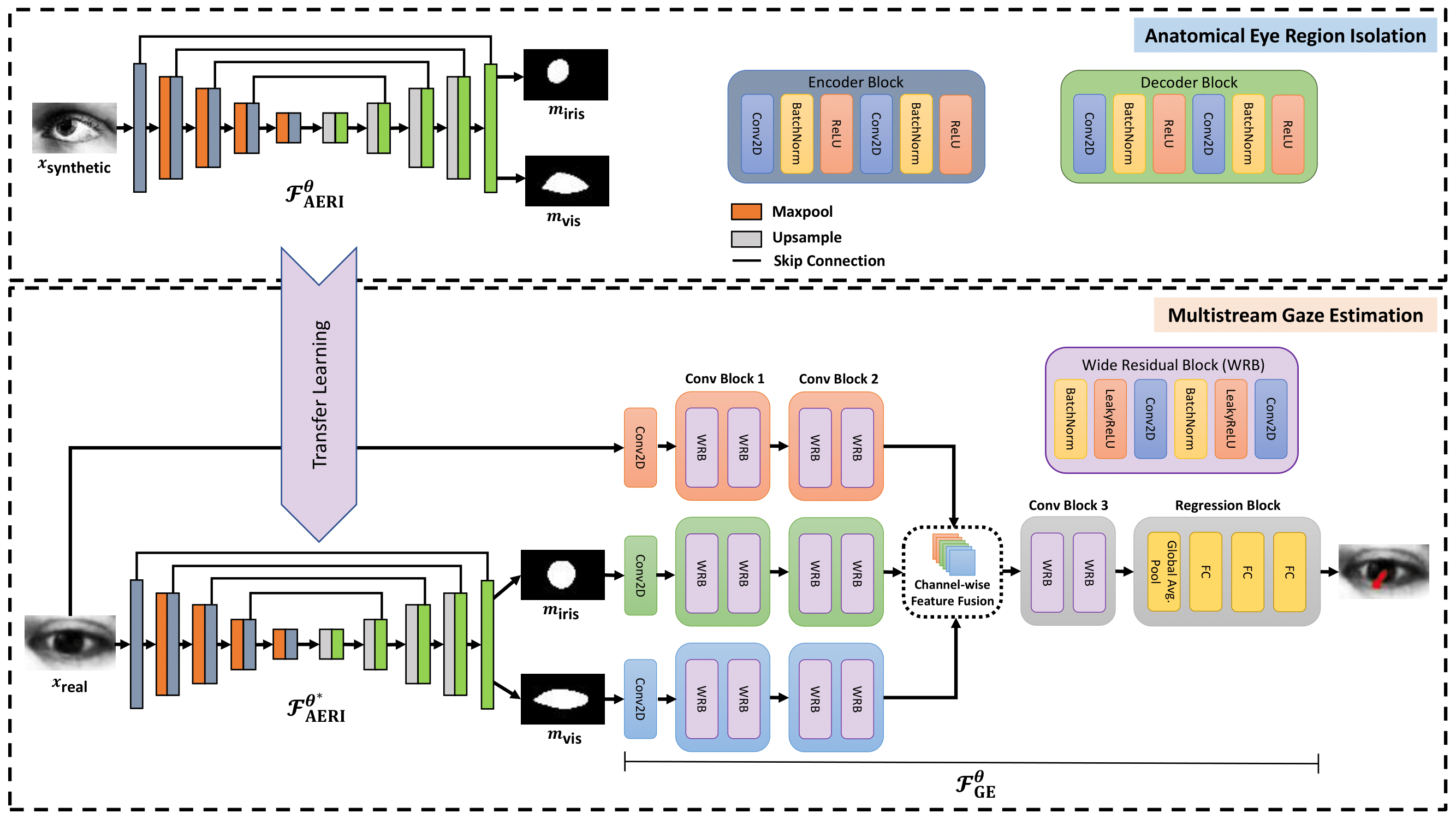Multistream Gaze Estimation with Anatomical Eye Region Isolation by Synthetic to Real Transfer Learning
We propose a novel neural pipeline, MSGazeNet, that learns gaze representations by taking advantage of the eye anatomy information through a multistream framework. Our proposed solution comprises two components, first a network for isolating anatomical eye regions, and a second network for multistream gaze estimation. The eye region isolation is performed with a U-Net style network which we train using a synthetic dataset that contains eye region masks for the visible eyeball and the iris region. The synthetic dataset used in this stage is procured using the UnityEyes simulator, and consists of 80,000 eye images. Successive to training, the eye region isolation network is then transferred to the real domain for generating masks for the real-world eye images. In order to successfully make the transfer, we exploit domain randomization in the training process, which allows for the synthetic images to benefit from a larger variance with the help of augmentations that resemble artifacts. The generated eye region masks along with the raw eye images are then used together as a multistream input to our gaze estimation network, which consists of wide residual blocks. The output embeddings from these encoders are fused in the channel dimension before feeding into the gaze regression layers. We evaluate our framework on three gaze estimation datasets and achieve strong performances. Our method surpasses the state-of-the-art by 7.57% and 1.85% on two datasets, and obtains competitive results on the other. We also study the robustness of our method with respect to the noise in the data and demonstrate that our model is less sensitive to noisy data. Lastly, we perform a variety of experiments including ablation studies to evaluate the contribution of different components and design choices in our solution.
PDF Abstract



 MPIIGaze
MPIIGaze
 Gaze360
Gaze360
 EYEDIAP
EYEDIAP